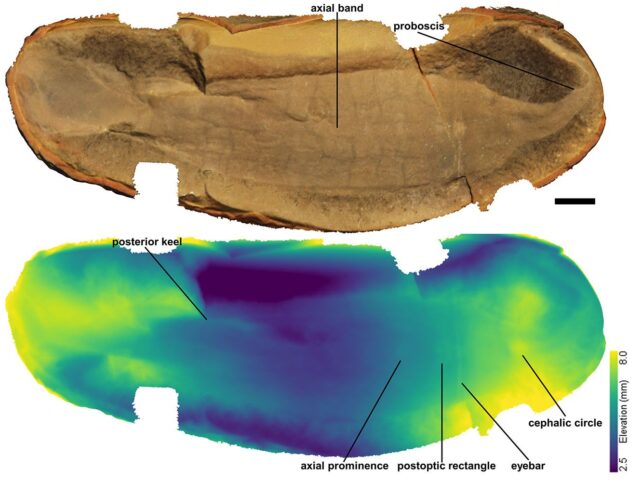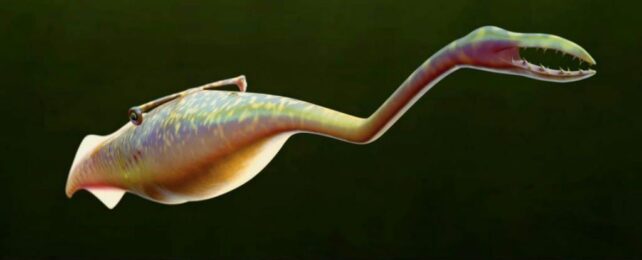The most thorough study yet of a mysterious creature that lived 300 million years ago has ruled that it had no bones after all.
Since its discovery nearly 70 years ago, the true nature of Tullimonstrum gregarium – AKA the Tully monster – has confounded scientists. Studies have variously found it was a vertebrate, or an invertebrate, with a back-and-forth that has gone on for years.
"We believe that the mystery of it being an invertebrate or vertebrate has been solved," says paleontologist Tomoyuki Mikami, at the University of Tokyo at the time of the study, now at the National Museum of Nature and Science in Japan.
"Based on multiple lines of evidence, the vertebrate hypothesis of the Tully monster is untenable. The most important point is that the Tully monster had segmentation in its head region that extended from its body. This characteristic is not known in any vertebrate lineage, suggesting a nonvertebrate affinity."
Numerous specimens of fossilized Tully monsters have been found since fossil hunter Francis Tully stumbled across the first in the Mazon Creek fossil bed in Illinois in 1955, and they paint a picture of a truly bizarre marine beastie. Measuring up to 15 centimeters (6 inches) in length, the Tully monster had a body with cuttlefish-like fins on its tail, eyes protruding from stalks like a bar across its forehead, and a long, thin proboscis ending in what appears to be a toothed mouth or claw.
The sheer weirdness of the thing has made it incredibly hard to classify even at the basic level. No bony structures have been found in any of the fossils, but that's not diagnostic in and of itself. Cartilaginous skeletons, as found in some vertebrate fish, would not be preserved in the same way as bone.
Some of the Tully monster's characteristics have been interpreted as consistent with structures found in jawless cartilaginous marine vertebrates, such as lampreys. Other scientists have argued that these characteristics cannot be conclusively interpreted as vertebrate-like. It's a debate that has gone back and forth for years.

To try and resolve the issue once and for all, Mikami and his colleagues undertook an exhaustive investigation. They collected more than 150 Tully monster specimens and more than 70 fossils of other creatures from the exceptionally detailed Mazon Creek fossil bed, and subjected them to high-resolution 3D laser scanning and x-ray micro-computed tomography.
They made a careful study of structures that had been interpreted as analogous to vertebrate characteristics. These were features that had been interpreted as myomeres, or blocks of skeletal muscle tissue; a tri-lobed brain; cartilage; and fin rays.
None of them, the researchers found, were comparable to features found in vertebrates. What had been interpreted as myomeres was clearly different from structures found in vertebrates, and the vertebrate-like brain, gill pouches, cartilages and fin rays were absent entirely. Moreover, the "teeth" in the proboscis were very different from those of lampreys, contrary to previous comparisons.
Since the Tully monster is so unlike any creature living on Earth today, it's unsurprising that scientists have struggled to figure out where it fits. Having found that it's an invertebrate, the next challenge for the team is to figure out what kind of invertebrate it was: a vertebrate-like invertebrate, such as a lancelet? Or is it closer to worms and snails?
Two things are crystal clear: the Tully monster has not even come close to giving up all its secrets. And neither is our planet Earth: how many oddities like the Tully monster have been lost to the ravages of time?
"There were many interesting animals that were never preserved as fossils," Mikami says.
"In this sense, research on the fossils from Mazon Creek is important because it provides paleontological evidence that cannot be obtained from other sites. More and more research is needed to extract important clues from Mazon Creek fossils to understand the evolutionary history of life."
The research has been published in Palaeontology.
